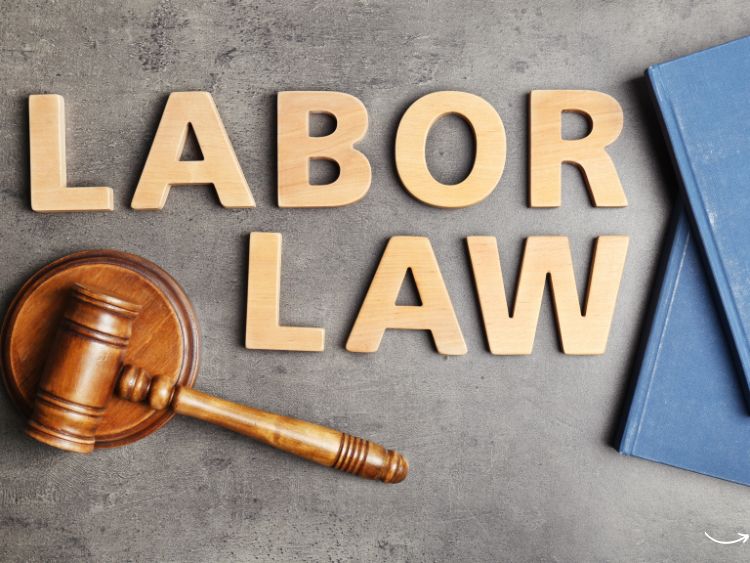Ever walked into an office or a break room and noticed a bunch of posters plastered on the wall? Those aren’t just there for decoration! They’re state labor law posters, and they’re a big deal for both employers and employees. If you’re scratching your head, wondering why these posters are so crucial, or if you’re an employer trying to navigate the maze of compliance, you’ve come to the right place. Let’s dive into the world of state labor law posters and uncover why they’re essential, what they should include, and how to make sure you’re on the right side of the law.
What Are State Labor Law Posters?
State labor law posters are official documents that employers are legally required to display in the workplace. These posters communicate employees’ rights and employer responsibilities under labor laws. They cover a range of topics, from minimum wage and safety regulations to anti-discrimination laws and workers’ compensation rights.
Why Are They Important?
You might wonder, why all the fuss over some posters? Well, it’s all about transparency and legal compliance. These posters ensure that employees are aware of their rights and protections under the law. For employers, displaying these posters is not just a good practice—it’s a legal obligation. Failing to do so can result in hefty fines and legal repercussions.
Who Needs to Display Them?
Virtually every employer, regardless of size, must display state labor law posters. This includes private sector employers, government offices, and nonprofit organizations. The posters should be placed in conspicuous locations where employees are likely to see them, such as break rooms, restrooms, or common areas.
Types of State Labor Law Posters
Different states have different requirements for labor law posters. However, some common types include:
Minimum Wage Posters
These posters inform employees about the current minimum wage in the state and any upcoming changes. They also detail how employees should be compensated for overtime work.
Safety and Health Protection Posters
Workplace safety is paramount, and these posters outline safety regulations, workers’ rights to a safe workplace, and procedures for reporting hazards.
Anti-Discrimination Posters
It’s illegal to discriminate against employees based on race, color, religion, sex, national origin, age, disability, or genetic information. Anti-discrimination posters inform employees of their rights and provide information on how to file complaints.
Workers’ Compensation Posters
These posters provide information on workers’ compensation benefits, including how to file a claim if an employee is injured on the job.
Family and Medical Leave Act (FMLA) Posters
FMLA posters outline employees’ rights to take unpaid, job-protected leave for specified family and medical reasons.
Equal Employment Opportunity (EEO) Posters
EEO posters detail the laws prohibiting job discrimination and outline the process for filing a complaint with the Equal Employment Opportunity Commission (EEOC).
How to Stay Compliant
Staying compliant with state labor law poster requirements can feel like juggling flaming torches. But don’t worry—it’s manageable with the right approach.
Regular Updates
Labor laws change frequently, and so do the requirements for labor law posters. Employers must ensure that their posters are up-to-date. This means regularly checking for updates from state labor departments and replacing old posters as needed.
Accurate Information
Ensure that the posters you display are accurate and complete. This means all required information must be present and correctly formatted. Some states provide specific guidelines on how the posters should be displayed.
Posting Locations
Posters should be placed in areas where they are easily visible to all employees. This typically means high-traffic areas such as break rooms, lunch areas, and near time clocks.
Digital Posters
In some cases, digital posters may be acceptable, especially for remote or telecommuting employees. However, it’s essential to verify if your state allows digital postings and under what conditions.
FAQs
Do All Employers Need to Display State Labor Law Posters?
Yes, all employers, regardless of size or industry, must display state labor law posters. This includes private companies, government agencies, and nonprofit organizations.
Where Should State Labor Law Posters Be Displayed?
Posters should be displayed in conspicuous areas where employees can easily see them, such as break rooms, restrooms, and common areas.
What Happens If an Employer Fails to Display State Labor Law Posters?
Failure to display required posters can result in fines and legal penalties. It can also leave employers vulnerable to employee complaints and lawsuits.
How Often Do State Labor Law Posters Need to Be Updated?
Posters should be updated whenever there are changes to labor laws. It’s a good practice to check for updates at least once a year.
Can Employers Use Digital Posters?
Some states allow digital posters for remote or telecommuting employees. However, it’s important to verify your state’s specific requirements.
Summary
State labor law posters might seem like a small detail, but they play a critical role in maintaining a fair and transparent workplace. They inform employees of their rights and ensure employers are compliant with labor laws. By regularly updating and accurately displaying these posters, employers can avoid legal troubles and foster a more informed and empowered workforce.
So, next time you see those posters on the wall, you’ll know they’re more than just paper—they’re a cornerstone of workplace rights and compliance.
Authoritative Links
- U.S. Department of Labor: https://www.dol.gov/general/topics/posters
- Occupational Safety and Health Administration (OSHA): https://www.osha.gov/workplace-posters
- Equal Employment Opportunity Commission (EEOC): https://www.eeoc.gov/employers/poster.cfm
- Family and Medical Leave Act (FMLA) Information: https://www.dol.gov/agencies/whd/fmla
- State Labor Department Websites: https://www.dol.gov/agencies/whd/state/contacts

